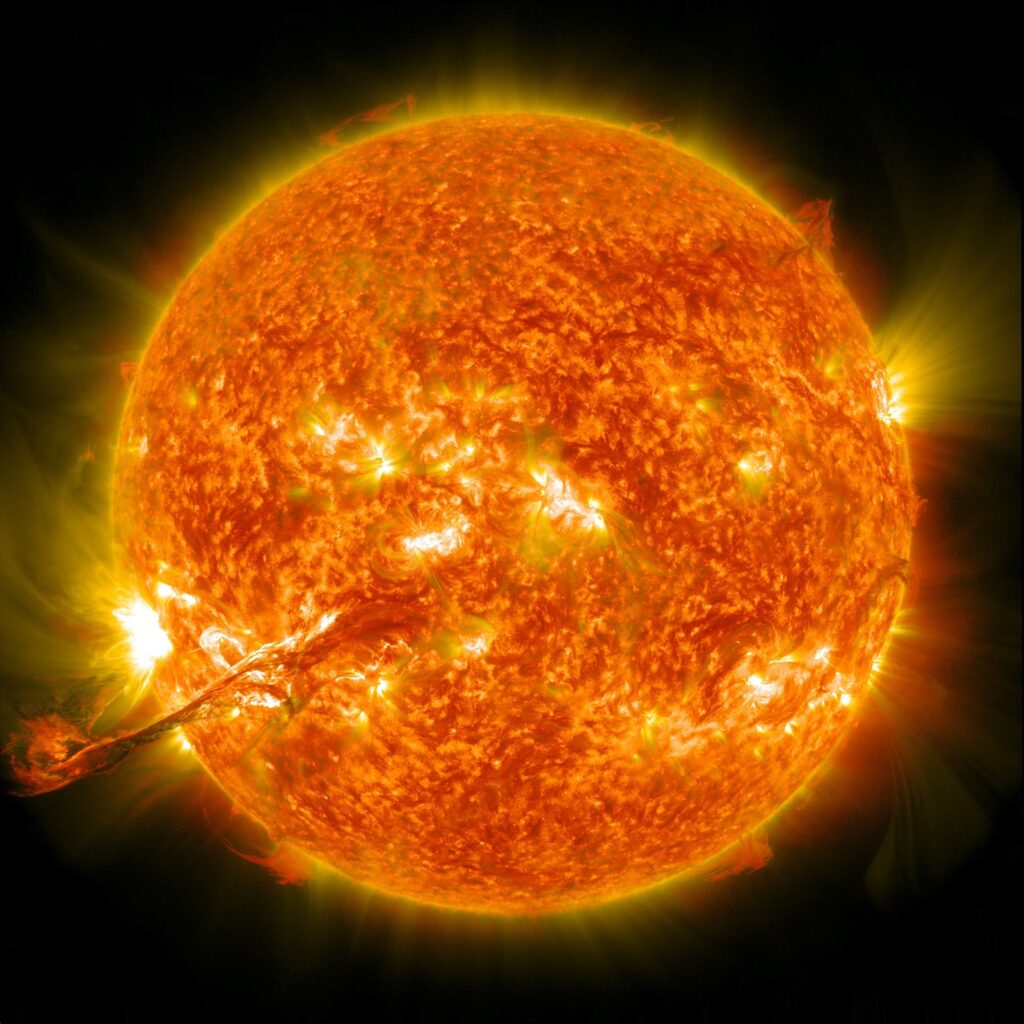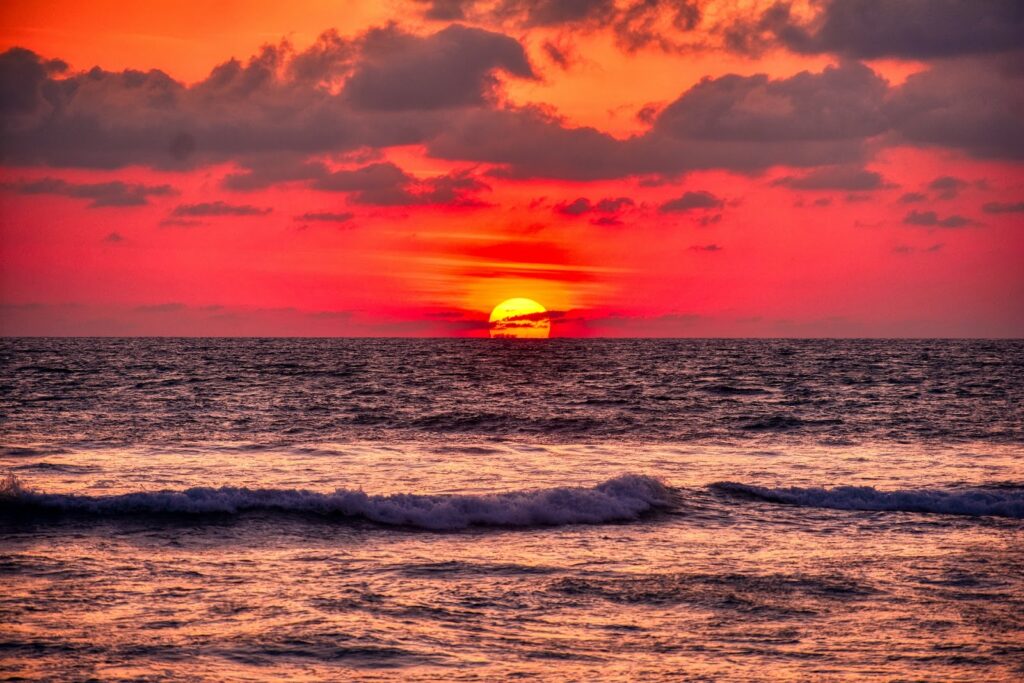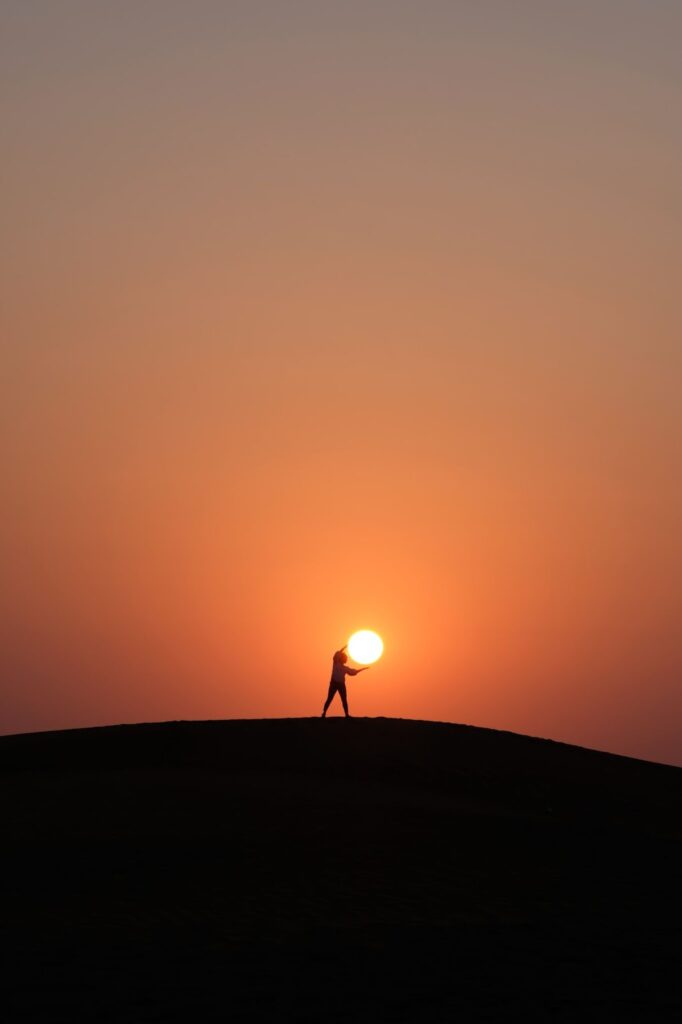Going out on a clear morning you can often see the sun rising in the sky but have you ever wondered: How old is the sun? In this article we are going to learn more about the huge orange ball that crosses our sky and find out just how old the sun is.
What Is the Sun?
The orb that is visible in our daylight sky which we know as the sun is in fact a star. This star is classified as a yellow dwarf and is central to our solar system. Earth and the other planets of our solar system orbit this vast star. In fact it is our own planet’s rotation and orbit which creates the appearance of the sun moving across our sky. It itself is stationary as we revolve around it.

Situated 93 million miles (150 million kilometers) from our planet the sun is imperative to our existence on this planet. Without this glowing orb life on this planet would cease to exist.
What Are Stars?
Now we know what the sun is, what exactly is a star? Well every clear night we have the potential to see millions of stars in the night sky. These shining lights in the dark are likely our most familiar astronomical body.
These bright heavenly bodies represent the most fundamental building blocks of galaxies with some being billions of years of old. They are huge energy producing balls of gas which through nuclear fusion also produce heavy elements such as carbon, nitrogen and oxygen.
How Are Stars Formed?
Hundreds of thousands of years after the Big Bang the gases released into our universe were not spread out evenly. Two main gases, hydrogen and helium, would clump together into dense clouds of gas. As these clumps grew they would become denser and more compact. At the center of these dense clumps temperatures became hotter eventually leading to nuclear fusion.
The cloud collapses inward causing the material at the center to heat up. This is known as a protostar and the gradual build up of heat and pressure creates a star. Sometimes these clouds which also include dust may break into blobs creating multiple stars. This is why you may see stars grouped together in the night sky.
How Big Is the Sun?
The sun on a clear day is visible from the earth and in fact we should never stare directly at it. This is despite it being 93 million miles away so just how big is this giant orange orb? Scientists estimate that the sun has a radius of roughly 435,000 miles.

This may sound massive but there are many known stars which are much larger. In comparison to our planet however the son is roughly 330,000 times the mass of earth and we could fit our planet into the sun 1.3 million times.
What Holds the Sun Together?
The sun because it is a star is actually a huge ball of gas which is held together by its own internal gravitational forces. It is made up of several regions which include in order from the center out:
- Core
- Radioactive zone
- Convection zone
- Photosphere
- Chromosphere
- Transition zone
- Corona
Once material exits the corona of the sun at supersonic speeds, it becomes what is known as a solar wind. This solar wind forms a huge magnetic bubble of sorts around the sun which is known as the heliosphere. It is this heliosphere that extends beyond the orbit of all the planets in our solar system. Essentially our planet as well as all others in the solar system are held within the sun’s atmosphere.
Will the Sun Die One Day?
We know that stars eventually burn out and this will inevitably one day happen to our sun. However unless you are reading this billions of years in the future the sun burning out is not your immediate environmental concern.
Experts estimate the sun will burn out in roughly 10 billion years. It should be noted however that heading into this process the sun will change and in about 5 billion years it may become a red giant. Still though, nothing for us or even hundreds of generations of our family to worry about. So if someone tries to tell you that solar power is a finite resource they are very wrong.
How Old Is the Sun?
Estimates suggest that the sun has up to 10 billion years worth of fuel left to burn off before it eventually dies and becomes a neutron star. The big question is how long has the sun been around for so far? Well obviously it is impossible to place an exact age on such a huge and ancient celestial body but experts suggest that the sun is somewhere in the region of 4.5 – 5 billion years old.
How Do We Know the Sun’s Age?
As mentioned we can not pinpoint an exact age for the sun this is because the methods of estimating its age are an indirect process. Estimates have been reached by several independent methods and all have produced a similar result in the region of 4.5 – 5 billion years.

One of the methods was to use radioactive dating on the oldest meteorites that could be found. The theory being that our solar system including the planets, moons and asteroids all formed as one unit. This should mean that theoretically the sun should roughly be the same age as the oldest meteorites.
Rocks from Earth were also tested showing that they were 4.6 billion years old again using the theory of the solar system developing together as a whole unit. The presence of fossils on Earth also hints at an age range for the sun as the luminous rays of this star are what helped establish life on this planet.
Final Thoughts
It is impossible to place an exact age on the sun but the testing of meteorites, earth rocks and fossils using radioactivity as well as other estimated methods point to an origination point for this star between 4.5 – 5 billion years ago.
